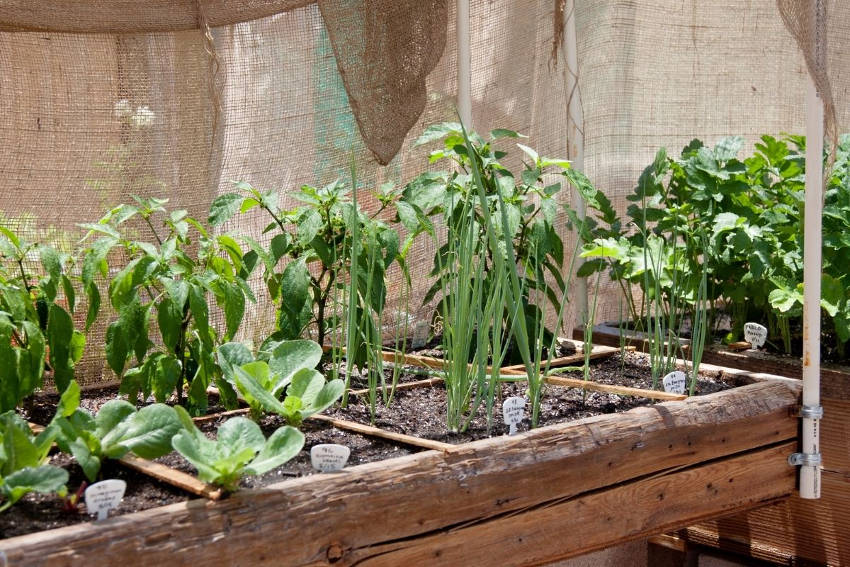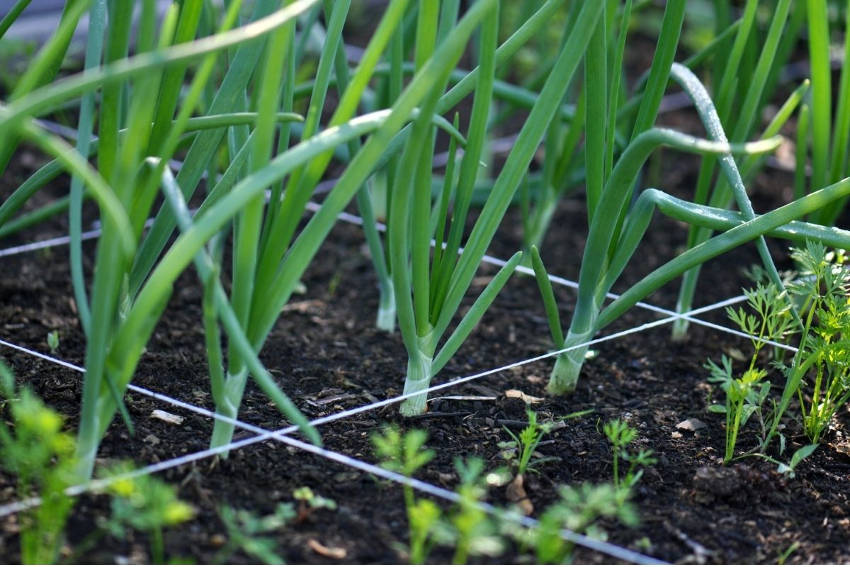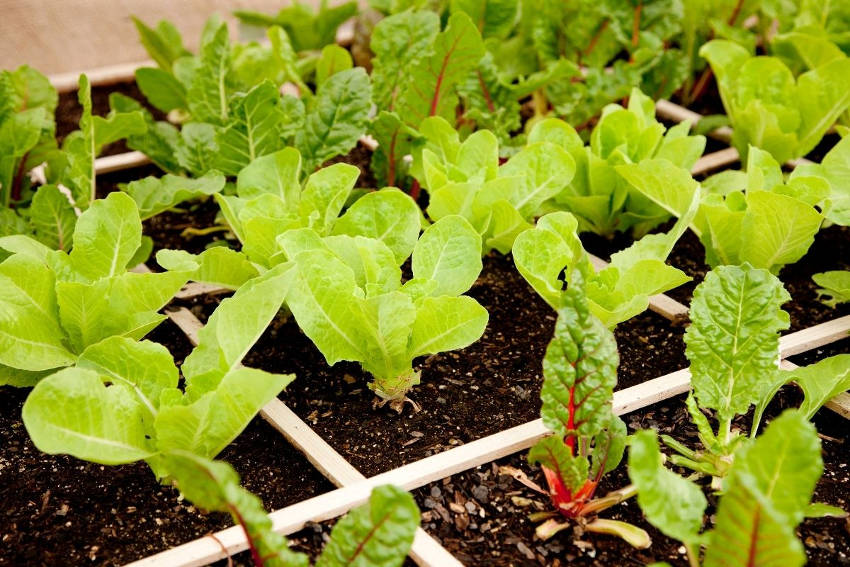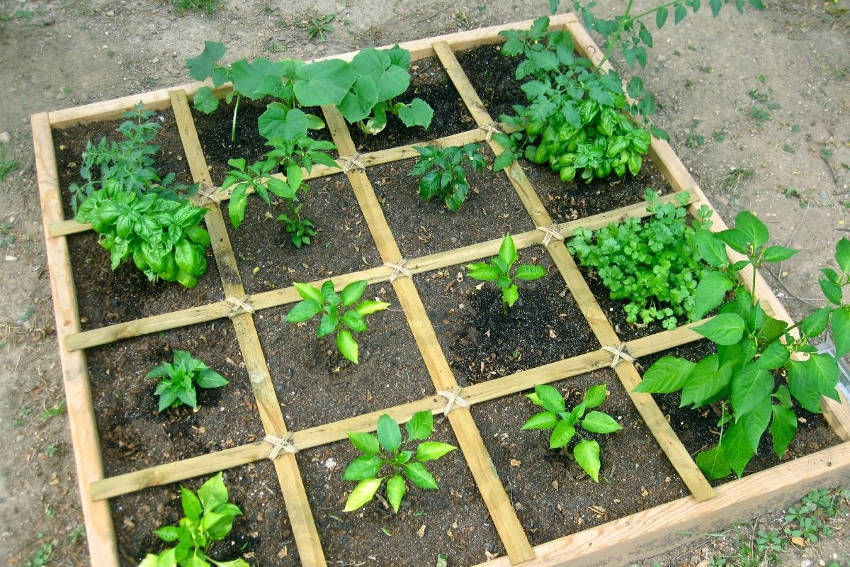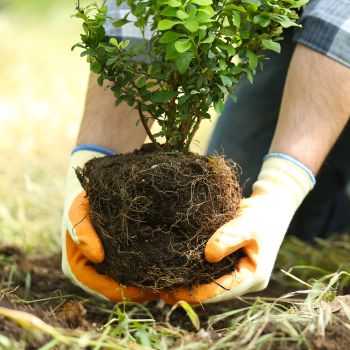Square foot gardening is a variation of grid gardening, a centuries-old gardening practice where vegetables are grown within squares rather than in rows. It was devised by American civil engineer Mel Bartholomew in the 1980s as a way to maximise the variety and quantity of vegetables that could be grown by a busy family in a small back garden. Bartholomew passed away in 2006, but his legacy lives on through those who practice square foot gardening.
What is square foot gardening?
At its most basic, square foot gardening involves dividing a garden bed into squares, usually 30cm x 30cm, and planning and planting within the resulting grid. Different vegetables, herbs or flowers are grown in neighbouring grids, resulting in a varied and diverse selection of crops.
Bartholomew’s method involves constructing a low raised bed and making a special soil mix, though neither of these is essential. The most important element of square foot gardening is the planning and spacing of crops to achieve maximum yield.
Weighing Up the Pros and Cons
Gardeners who’ve tried square foot gardening say it produces more crops in less space, with less water, seeds and labour, than growing in traditional rows.
One of the biggest benefits of square foot gardening is that plants are grown at a high density, making it a good choice for small gardens. Gardeners can grow vegetables more intensively without impacting negatively on yield. Vegetables are also grown vertically on trellises where possible, such as for cucumbers, peas and beans.
Another benefit of square foot gardening is that the diversity of crops grown helps avoid gluts and decreases the risk of disease. Careful planning means there shouldn’t be surplus produce as you might get in more conventional row gardening. Planting different crops in succession in the same square also reduces the chances of diseases becoming persistent in the garden beds.
Because plants are grown at a high density, weeds are suppressed which saves maintenance time. Less exposed soil should also mean less evaporation and less watering. The addition of vermiculite in the soil mix also helps to retain moisture.
Most of the work involved in square foot gardening is in constructing raised beds and making the special soil mix that ensures a top notch harvest. The completed beds shouldn’t ever need digging over, as the 120cm by 120cm size means that the middle can be reached without standing on the soil and compacting it.
There are some drawbacks to the grid method worth mentioning. The first is the initial cost of the raised beds and soil mix. This can be reduced by using recycled materials for the beds and making your own garden compost. Other drawbacks are the lack of any perennial crops such as asparagus or fruit, and potential problems growing wind-pollinated crops, most notably sweetcorn, in groups of one or two rather than the usual recommended minimum of 9 or 16. Mildew may also be an issue with crops planted closely together.
Setting Up a Square Foot Garden
The usual set-up for square foot gardening is to build a raised bed measuring 4 feet square (120cm x 120cm), so you can reach the centre without disturbing the soil. If you are shorter, or have children who might want their own raised bed, you might want to consider a 90cm by 90cm raised bed, with a 3 x 3 square layout. It’s possible to do a version of square foot gardening without building a raised bed, especially if your soil is fertile.
If you plan to grow taller crops, install a 120cm high trellis or support on the southern side of the bed. It is important that this is placed so that the taller plants do not shade out the shorter ones to the north. Your raised bed should receive 6-8 hours of sun each day in summer.
Raised beds made of wood may benefit from having their sides lined with plastic sheeting to help prolong the life of the wood. Take care that neither the plastic, nor the wood if it is not covered in plastic, contain chemicals that could leach into the soil and be harmful to human health.
A key component of square foot gardening is the use of a special soil mix to fill the raised beds. This consists of a third vermiculite or perlite, a third coconut coir and a third of organic compost. You can use homemade compost or buy a good quality one.
Once the beds are filled with soil, they’re divided into 16 squares, each measuring 1 foot by 1 foot (30cm x 30cm), using string or garden canes. The resulting grid forms the basis of planning and planting the beds.
Planting the Grid
Each square can be planted with a different type of vegetable or companion plant. Smaller plants such as carrots and radishes can be grown 16 plants to a square. Other vegetables, such as silverbeet, should be planted with four plants per square. Larger crops like tomatoes, potatoes and celery are planted one plant to a square. Using a trellis to grow cucumbers and other climbing plants saves space that can be used to fit more plants into the bed.
There are a variety of planting plans available online but the grid system makes it easy to make your own plan. Follow the recommended number of plants per square and remember to plant taller plants on the south side of the beds so they don’t shade smaller plants. Include some companion plants either within the grid or on the edges of the beds; marigolds are a popular choice to both brighten up the garden and deter pests like whitefly.
The squares can be sown directly, or seeds can be started in trays or small pots elsewhere to free up space for other crops in your square foot garden. Either way, the idea is to replace plants as they finish producing to ensure a continuous supply of vegetables for you and your family.
Spacing guidelines:
- 16 per square (plant in a 4x4 grid): carrots, parsnips, radish.
- 8-9 per square (plant in 3 rows): beans, beets, coriander, peas, spinach, turnips.
- 4 per square (plant in a square with equal distance from each other and the border of the grid): basil, garlic, kohlrabi, leek, lettuce, onion, silverbeet, zucchini.
- 2 per square (plant next to a stake or trellis): cucumber, pumpkin, squash, rockmelon.
- 1 per square (plant in centre): celery, corn, eggplant, kale, heading lettuce, okra, oregano, parsley, capsicum, rosemary, sweet potato, tomato.
- 2 plants per 4 squares: broccoli, Brussels sprouts, cabbage, cauliflower.
Ongoing Maintenance
Each time you harvest a square, add in a trowel of compost and, as the level in your beds drops, top it up with more of the soil mix. There should be no need to add any other fertiliser, and the soil mix shouldn’t need replacing for around 10 years.
It’s a good idea to practice crop rotation, planting vegetables from different families in succession in each square. This will discourage soil-borne diseases from taking hold in the garden bed.
Square foot gardening is well worth a try, particularly if you have a small garden or want to grow a wide range of vegetables. It is an efficient use of space and time and can be an attractive alternative to growing in rows.
